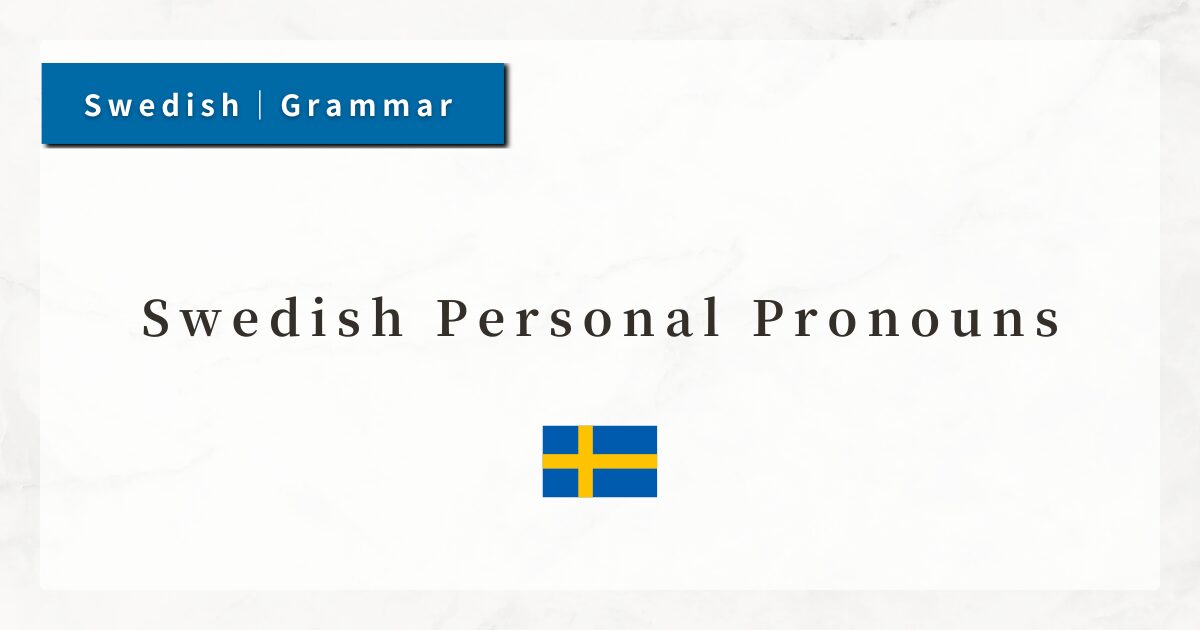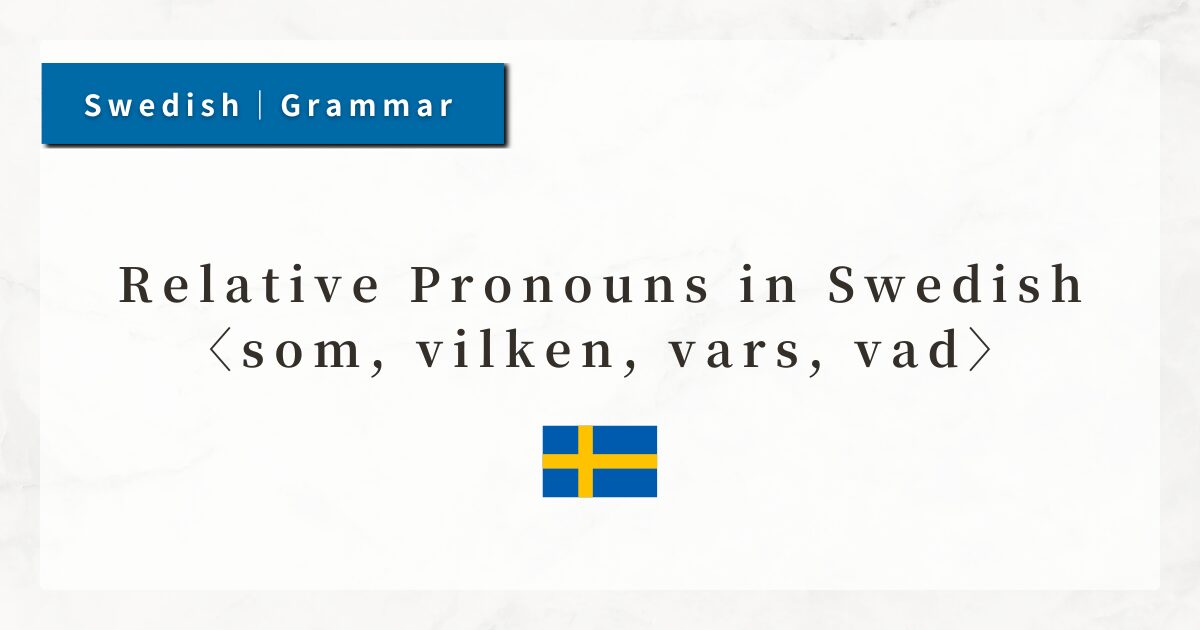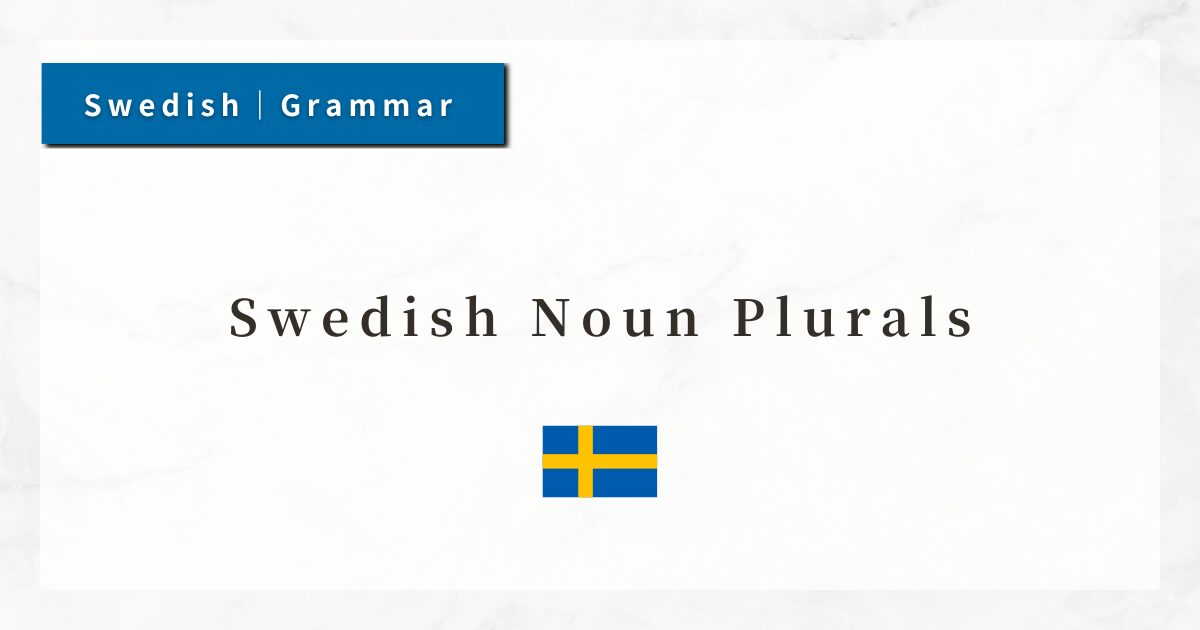#2 Swedish Personal Pronouns|List, Usage, and Example Sentences

When forming sentences in Swedish, personal pronouns are essential. These are words such as “I,” “you,” “he,” “we,” etc., used in place of nouns to refer to people or things.
In this lesson, I will explain the forms and usage of Swedish personal pronouns, focusing on how to use them naturally as the subject of a sentence.
1. What Are Personal Pronouns?
Personal pronouns are pronouns used in place of a person’s or object’s name within a sentence.
For example, consider the sentence:
- Anna är läkare.
(Anna is a doctor.)
When creating a second sentence, instead of repeating the noun Anna, you can use Hon (she): Anna är läkare. Hon är snäll. (Anna is a doctor. She is kind.)
This is essential for avoiding repetition in conversation or writing and for keeping communication smooth.
In Swedish, personal pronouns have different forms for subjects (nominative) and objects (objective). In this lesson, we will focus only on subject-form personal pronouns.
2. Swedish Subject-Form Personal Pronouns
Below is the list of personal pronouns used as subjects in Swedish.
| Person | Pronoun | Meaning | Notes |
|---|---|---|---|
| 1st person singular | jag | I | Equivalent to English “I” |
| 2nd person singular | du | you | Used with familiar persons |
| 3rd person singular (masc.) | han | he | Used for males |
| 3rd person singular (fem.) | hon | she | Used for females |
| 3rd person singular (neut.) | den / det | it (things, animals, etc.) | Chosen based on the gender of the noun (common / neuter) |
| 1st person plural | vi | we | Equivalent to English “we” |
| 2nd person plural | ni | you (plural) | Equivalent to English “you” (plural) |
| 3rd person plural | de | they | Written form is de; in speech, pronounced dom |
3. Example Sentences with Personal Pronouns
In Swedish, the basic word order is “Subject (personal pronoun) + Verb + Other elements.” This is similar to English and quite straightforward.
Singular examples:
- Jag är student.
(I am a student.) - Du bor i Stockholm.
(You live in Stockholm.) - Han är läkare. / Hon är lärare.
(He is a doctor. / She is a teacher.) - Den är gammal. / Det är nytt.
(It (common gender) is old / It (neuter) is new)
Plural examples:
- Vi är glada.
(We are happy.) - Ni pratar svenska.
(You speak Swedish.) - De är här.
(They are here.)
→ Pronounced dom
4. Using den and det
In Swedish, the pronouns den and det are used depending on the gender (common / neuter) of the noun they replace.
While English it does not change form for gender, Swedish does.
| Noun | Gender | Pronoun | Example |
|---|---|---|---|
| en bok (a book) | common | den | Den är intressant. (It is interesting.) |
| ett hus (a house) | neuter | det | Det är stort. (It is big.) |
Tip: When learning Swedish nouns, remember to learn them together with their article (en / ett). This will help you choose the correct pronoun naturally.
5. Written vs. Spoken Form: de and dom
The third-person plural pronoun meaning “they” is written as de, but in spoken Swedish it is generally pronounced dom.
- De är hemma.
(They are at home.)
→ Pronunciation: dom är hemma
6. Summary
- Swedish personal pronouns, like in English, refer to “I,” “you,” “he,” “she,” etc., and form the basis of sentence structure as subjects.
- For non-human nouns, use den or det according to the noun’s gender.
- de is the written form for “they,” but in speech it is typically pronounced dom.




